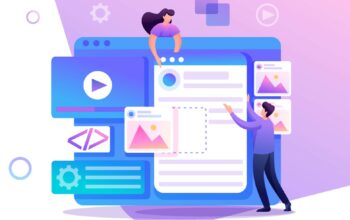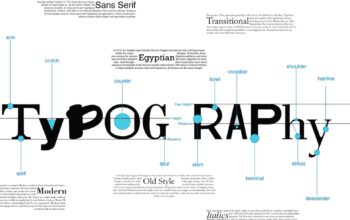
In today’s digital age, having a well-designed website is essential for businesses and individuals alike. Whether you’re an entrepreneur looking to promote your brand or a freelancer showcasing your portfolio, a successful web design project can make all the difference. However, designing a website can be a daunting task, especially if you’re new to the field. Fortunately, there are several tips and tricks that can help you achieve success in your simple web design project. In this article, we will explore these valuable insights, providing you with the expertise and knowledge necessary to create a visually appealing and user-friendly website.
Utilizing Tips and Tricks for a Successful Simple Web Design Project
Creating an effective web design project requires careful planning and execution. By following these tips and tricks, you can ensure that your website stands out from the competition:
1. Understand Your Target Audience
Before diving into the design process, it’s crucial to understand who your target audience is. Conduct thorough research to identify their demographics, interests, and preferences. This information will guide your design decisions and help you create a website that resonates with your audience.
2. Develop a Clear Navigation Structure
Developing a clear navigation structure is crucial for ensuring a user-friendly experience on your website. Here are some key tips to help you create an effective navigation structure:
- Keep it Simple: Aim for a clean and straightforward navigation menu. Avoid overwhelming users with too many options. Stick to the most important and relevant sections of your website to streamline the navigation process.
- Use Descriptive Labels: Use clear and descriptive labels for each menu item to help users understand where they will be directed when they click. Avoid using generic terms and opt for specific labels that accurately represent the content within each section.
- Organize in a Logical Hierarchy: Arrange your navigation items in a logical hierarchy that makes sense to users. Group related pages or sections together under broader categories. This helps users navigate intuitively and find what they’re looking for without confusion.
- Provide Visual Cues: Use visual cues, such as dropdown menus or flyout navigation, to display subcategories or additional options within each section. This allows users to access specific content quickly and efficiently without having to backtrack or navigate through multiple pages.
- Ensure Consistency: Maintain consistency across your website’s navigation by using the same menu structure on all pages. Consistency helps users understand how to navigate your site regardless of which page they land on.
- Include a Search Functionality: Implement a search bar prominently within your navigation structure to allow users to search for specific content. This can be particularly helpful for users who have a specific page or topic in mind and want to bypass the traditional navigation.
By following these tips, you can develop a clear and intuitive navigation structure that guides users seamlessly through your website. Prioritize simplicity, use descriptive labels, organize content logically, provide visual cues, maintain consistency, and include a search function. A well-designed navigation structure enhances the user experience, reduces frustration, and helps visitors find the information they need efficiently.
3. Choose a Responsive Design
With the increasing use of mobile devices, it’s vital to have a website that is responsive and mobile-friendly. Utilize responsive design techniques to ensure that your website adapts seamlessly to different screen sizes, providing an optimal viewing experience for all users.
4. Optimize Page Loading Speed
In today’s fast-paced world, users expect websites to load quickly. Optimize your web design project for speed by minimizing file sizes, leveraging browser caching, and reducing the number of HTTP requests. A fast-loading website not only improves user experience but also positively impacts search engine rankings.
5. Utilize Engaging Visuals
Visual elements play a significant role in web design. Utilize high-quality images, videos, and graphics to engage your visitors. Ensure that the visuals are relevant to your content and enhance the overall user experience.
6. Create Compelling Call-to-Actions
Creating compelling call-to-actions (CTAs) is essential for driving user engagement and conversions on your website. Here are some key strategies to consider when crafting effective CTAs:
- Use Action-oriented Language: Begin your CTA with strong verbs that encourage users to take immediate action. Words like “buy now,” “learn more,” or “sign up” create a sense of urgency and motivate users to click.
- Make CTAs Visually Stand Out: Design your CTAs in a way that they catch the user’s attention. Use contrasting colors, bold fonts, or eye-catching buttons to make them visually distinct from the rest of your website content.
- Keep CTAs Clear and Concise: Avoid ambiguity and confusion by using clear and concise language in your CTAs. Users should immediately understand what they will get or what action they need to take when they click on the CTA.
- Offer Value or Incentives: Give users a reason to click on your CTAs by offering value or incentives. Whether it’s a free e-book, a discount code, or exclusive access to content, providing something of value increases the chances of users engaging with your CTAs.
- Place CTAs Strategically: Position your CTAs where they are most likely to be noticed. Consider placing them above the fold, at the end of a blog post, or on relevant product pages. Also, use responsive design techniques to ensure your CTAs are easily accessible on different devices.
- Test and Optimize: Continuously test and optimize your CTAs to maximize their effectiveness. Experiment with different designs, placement, wording, and colors to identify what resonates best with your audience. Analyze click-through rates and conversion rates to make data-driven decisions and refine your CTAs accordingly.
By following these tips, you can create compelling CTAs that drive user engagement and lead to higher conversion rates. Remember to make them visually appealing, use clear and action-oriented language, and provide value to your users. Regular testing and optimization will help you fine-tune your CTAs and improve their performance over time.
7. Implement Search Engine Optimization (SEO) Techniques
To ensure that your website reaches its target audience, it’s essential to implement SEO techniques. Research and incorporate relevant keywords into your content, meta tags, and URLs. Additionally, optimize your website’s structure, headings, and image alt attributes to improve search engine visibility.
8. Test and Optimize
Testing and optimization play a crucial role in the success of a web design project. Once your website is up and running, it’s essential to continuously monitor its performance and make improvements based on user feedback and data analysis. Testing involves conducting usability tests, analyzing user behavior, and identifying areas for improvement. By gathering insights from real users, you can uncover usability issues, identify pain points, and make informed decisions to enhance the overall user experience.
Optimization goes hand in hand with testing. It involves making data-driven changes and refinements to improve various aspects of your website, such as loading speed, navigation, content engagement, and conversion rates. Through optimization, you can fine-tune your web design project to align with your goals and meet the needs of your target audience. By leveraging analytical tools and techniques, you can track key metrics, evaluate the effectiveness of your design choices, and implement changes that lead to better user satisfaction and increased conversions.
A continuous cycle of testing and optimization allows you to stay ahead of the game in the ever-evolving digital landscape. By regularly testing different elements, such as layout variations, button placements, or content formats, you can gather valuable insights into what works best for your audience. Optimization based on these insights allows you to refine your design, remove barriers to user engagement, and create a seamless browsing experience. Ultimately, testing and optimization are essential steps in ensuring that your web design project remains relevant, user-friendly, and effective in achieving your desired goals.
Frequently Asked Questions (FAQs)
Here are some common questions that arise when undertaking a simple web design project:
FAQ 1: How do I choose the right color scheme for my website?
Choosing the right color scheme depends on various factors such as your brand identity, target audience, and the emotions you want to evoke. Research color psychology and consider using online color palette generators to find harmonious combinations.
Answer: Experiment with different color options and gather feedback from your target audience to ensure your chosen color scheme resonates with them.
FAQ 2: Should I use stock images or invest in custom photography?
Both options have their pros and cons. Stock images are readily available and cost-effective, but they lack uniqueness. On the other hand, custom photography provides original visuals but requires a higher investment. Consider your budget, branding requirements, and the message you want to convey to make an informed decision.
Answer: If budget permits, investing in custom photography can help your website stand out and establish a stronger connection with your audience.
FAQ 3: How important is content in web design?
Content is a crucial element of web design. Engaging and informative content enhances user experience, improves search engine rankings, and establishes your authority in the industry. Ensure that your content is well-written, easy to read, and relevant to your target audience.
Answer: Pay attention to both the design and quality of your content to create a well-rounded website that appeals to both users and search engines.
FAQ 4: How can I make my website accessible to people with disabilities?
Web accessibility is essential to ensure equal access to information for everyone. Incorporate accessibility guidelines, such as providing alternative text for images, implementing proper heading structures, and making sure your website is compatible with screen readers. Regularly test your website’s accessibility using tools like WAVE or Lighthouse.
Answer: By prioritizing web accessibility, you create an inclusive digital experience for all users and demonstrate your commitment to diversity and inclusivity.
FAQ 5: What are the essential security measures for a web design project?
Security should be a top priority in any web design project. Ensure that your website has an SSL certificate to encrypt sensitive data, implement strong passwords, regularly update your content management system and plugins, and regularly back up your website to protect against potential security threats.
Answer: By implementing robust security measures, you safeguard your website and protect your users’ information from potential cyberattacks.
FAQ 6: How can I optimize my website for better conversion rates?
Optimizing your website for better conversion rates involves several strategies. Focus on improving your website’s loading speed, streamlining the user journey, simplifying your forms, incorporating social proof, and optimizing your CTAs. A/B testing different elements can also help you identify what works best for your target audience.
Answer: Continuously analyze and refine your website’s design and content to create a seamless user experience that encourages visitors to take action.
Designing a successful and visually appealing website requires a combination of technical skills, creativity, and attention to detail. By utilizing the tips and tricks outlined in this article, you can set yourself up for success in your simple web design project. Remember to understand your target audience, optimize your website for speed and search engines, and continuously test and refine your design based on user feedback. With a well-executed web design project, you can establish an online presence that captivates your audience and achieves your desired goals.



